Colombian Food Dishes: Basic Overview
Common Ingredients
Common Cooking Methods
Courses
Meals
Key Taste
Eating Etiquette
Meal Presentation
Culinary Festivals
Influence and Fusion
Popular Types of Colombian Dishes
-
Soups
Colombian soups are typically brothy and feature a variety of ingredients, including meats such as chicken, beef, or fish, along with an assortment of vegetables, roots, and sometimes corn or plantains.
They are known for their comforting qualities and are often served with sides like rice, avocado, and arepas, making them a fulfilling meal.
-
Stews
Stews in Colombian cuisine feature slow-cooked meats and vegetables that meld together to create deep, savory flavors.
These stews often include a base of potatoes or other root vegetables, contributing to their thick, comforting texture.
-
Fried dishes
From crispy, golden plantains to savory fried pork belly, these dishes are a testament to Colombia’s love for hearty, flavorful street food and snacks.
Fried foods in Colombia are not just limited to snacks; they are often featured as key components in larger meals.
-
Rice dishes
Rice dishes in Colombian cuisine are diverse and integral, ranging from simple, lightly seasoned sides to complex, flavorful mains that incorporate meats, vegetables, and spices.
From the creamy and aromatic arroz con coco to the hearty and savory arroz atollado, Colombian rice dishes are a celebration of the country’s rich culinary heritage, often enjoyed in communal settings
-
Desserts
Desserts in Colombian cuisine are as diverse as they are delightful, ranging from simple, fruit-based treats to rich, sugary confections.
These desserts often incorporate local ingredients like coconut, guava, and panela, showcasing the country’s tropical abundance.
Colombian dishes are well-known culinary creations enjoyed in Colombia, a country nestled in the northern tip of South America. Colombian food richly combines the influences of Indigenous cuisine, Spanish specialties, African delights, and Arab cultures.
Colombian cuisine is known for its hearty and comforting dishes, often featuring generous use of legumes, meats, and tropical fruits.
One of the central pillars of Colombian cuisine is the arepa, a versatile corn cake. Soups and stews are special in the Colombian diet, with ajiaco, a chicken, and potato soup, a beloved example from Bogotá.
The cuisine varies significantly from one region to another, reflecting the country’s diverse geography and climate.
Coastal areas, for instance, offer an abundance of seafood dishes, such as ceviche and sancocho de pescado (fish stew), while the Andean region is known for more hearty fare, including bandeja paisa, a platter consisting of beans, rice, chorizo, avocado, and more.
Flavors in Colombian dishes are often bold and satisfying, with a balance between savory, sweet, and tangy elements. Cooking methods vary widely, but grilling, stewing, and frying are particularly prevalent.
It’s time to dive into Colombia’s culinary treasures! I’ll uncover the secrets behind their most beloved dishes, understand what sets their traditional food apart, and discover why it’s loved worldwide. Plus, I’ll touch on the health benefits of Colombian cuisine.
You can also explore the unique flavors of regional dishes, learn about dining customs, and get tips on pairing food and drinks. Don’t miss our comparison of Colombian and Mexican cuisine.
Ready to embark on this flavorful adventure? Let’s go!
37 Popular Colombian Dishes with Filters
Here are the top 37 Colombian dishes listed by their global popularity. You can easily find what you’re looking for by filtering through ingredients, flavors, cooking methods, dish types, and meal times.
Whether you’re interested in traditional recipes, national favorites, or looking to explore innovative fusions, street foods, these filters have you covered.
Arepa
- Street Food
- Traditional
Arepa is a versatile flatbread in Colombia, available in various forms like arepa de huevo (egg-filled) and arepa de choclo (sweet corn arepa).
The taste of arepas can vary widely; they can be savory or sweet, depending on the fillings or the type of cornmeal used.
Besides its deep-rooted presence in Colombia, the arepa has also gained popularity in neighboring countries, especially Venezuela.
Empanada
- Street Food
- Traditional
Empanada is a type of stuffed bread or pastry that is either baked or fried, making it a popular street food choice in Colombia.
Known for its savory fillings, which often include a combination of meat, potatoes, and spices, Colombian empanadas are distinguished by their cornmeal dough.
Empanadas are particularly prevalent during important celebrations and festivals, such as Christmas and other national holidays.
Bandeja Paisa
- National
- Traditional
Bandeja paisa is a hearty and traditional platter in Colombian cuisine, particularly associated with the Paisa region.
This platter combines red beans, white rice, meats (ground, chicharrón, and chorizo), a fried egg, plantain, arepa, and avocado for a savory and slightly sweet taste.
This dish is known for its generous portions and is the country’s national dish. The taste is a rich blend of savory, meaty, and slightly sweet flavors thanks to various ingredients.
Ceviche
- Traditional
Ceviche, while widely associated with Peruvian cuisine, has a special place in Colombian culinary traditions, especially along the coastal regions.
Colombian ceviche typically features seafood marinated in lime juice with onions, cilantro, and sometimes tomato sauce, creating a refreshing and tangy dish.
Variations feature fish, shrimp, or a mix of seafood. Its popularity transcends borders, with variations throughout Latin America, each region adding a unique twist to this zesty dish.
Tamale
- Traditional
The Colombian tamale, wrapped in banana leaves instead of corn husks like its Mexican version, is a key part of Colombia’s culinary heritage and is known for its unique flavor and comforting qualities.
It consists of masa (corn dough) filled with meats such as pork, chicken, or beef and vegetables like peas, carrots, and potatoes, seasoned with a blend of spices for a savory and slightly spicy taste.
This dish is especially popular during Christmas, symbolizing celebration and unity. Preparing tamales is a communal, labor-intensive activity that fosters togetherness among family and friends.
Sancocho
- Traditional
Sancocho is a beloved traditional soup, a testament to Colombia’s rich culinary diversity, blending Indigenous, Spanish, and African influences.
Sancocho typically combines meats (such as chicken, pork, or fish), root vegetables, corn, and plantains, simmered in a flavorful broth until tender. The dish is often served with rice, avocado, and arepas, creating a fulfilling meal.
Ajiaco
- National
- Traditional
Ajiaco, a traditional Colombian soup, is particularly famous in Bogotá. It’s a rich blend of chicken, three types of potatoes, and guasca herb, creating a comforting and hearty meal.
Often garnished with capers, avocado, corn, or cream, Ajiaco carries a unique flavor profile that embodies Colombian culinary traditions. It’s a dish that brings families together, especially during cold weather, offering a taste of Colombian warmth and hospitality.
Patacones
- Street Food
- Traditional
Patacones, also recognized as tostones in some parts of Latin America, are a traditional street food in Colombian cuisine. This dish consists of twice-fried slices of green plantains, flattened before the second frying to create their distinctive crisp texture.
Patacones are typically savory, with a slightly salty taste, and are enjoyed as a side dish, a snack, or even as a base for toppings similar to canapés.
Lechona
- Traditional
Lechona, a national dish, is a festive and traditional Colombian delicacy that plays a central role in celebrations and gatherings, especially during Christmas and New Year’s festivities.
Lechona features a whole pig stuffed with rice, peas, and spices, slow-roasted to crispy-skinned perfection.
Arroz Con Pollo
- Traditional
Arroz con pollo is a traditional Colombian dish comprising chicken cooked with rice, seasoned with a blend of aromatic spices, vegetables, and sometimes a hint of beer, giving it a rich and comforting flavor.
This dish enjoys popularity beyond Colombia, finding a place in various forms across Latin America, each region adding its unique touch.
Chicharrón Colombiano
- Street Food
- Traditional
Chicharrón Colombiano is a traditional street food consisting of fried pork belly or pork rinds, beloved for its crispy exterior and tender, flavorful interior.
Chicharrón Colombiano is often enjoyed as a snack, part of a larger meal, or within dishes like bandeja paisa, contributing a delightful crunch and rich flavor.
It’s particularly popular during the festival season, especially at events and fairs across the country, where it’s savored amidst the joy and laughter of community celebrations.
Fritanga
- Street Food
- Traditional
Fritanga, affectionately known as “picado,” is a vibrant traditional Colombian dish feast for the senses.
It’s a rich, communal-style meal that showcases a variety of meats like beef, pork, and chicken alongside essential sides such as Creole potatoes, chorizo, blood sausage, crispy pork rinds known as chicharrón, and arepas.
Accompaniments like fried green plantains (patacones), ripe plantains, and fried yucca add sweetness and crunch, rounding out the meal.
Sopa de Pollo
- Traditional
Sopa de pollo, a staple in Colombian households, is a comforting chicken soup that’s much more than its simple name suggests.
This soup blends the richness of chicken with the heartiness of vegetables, creating a nurturing and flavorful dish often enjoyed with white rice, avocado, and arepas on the side.
It’s not just food; it’s a remedy believed to have healing properties, making it a go-to for cold days or when someone needs a bit of culinary TLC.
Cazuela de Mariscos
- Traditional
Cazuela de Mariscos is a traditional seafood stew boasting a rich blend of flavors from the Colombian coast. It’s a fusion dish, reflecting the diverse culinary influences of Colombia, including Indigenous, Spanish, and African.
This stew is packed with seafood like shrimp, fish, squid, and clams, simmered in a coconut milk-based broth with a mix of spices, garlic, onion, and bell peppers.
The result is a creamy, spicy, and slightly sweet dish that captures the essence of the ocean. Famous variations include adding lobster or crab for a more luxurious experience.
Cazuela de Mariscos is synonymous with coastal celebrations and is especially popular during festivals like the Festival del Mar in Santa Marta, where seafood takes center stage.
Pandebono
- Street Food
- Traditional
Pandebono is a cheese bread revered in Colombian cuisine as a traditional snack. This small, round bread is a staple of the Colombian breakfast table and is often enjoyed as a midday treat.
Made with a mixture of cassava starch (or yuca flour), cornmeal, cheese, eggs, and sometimes a leavening agent, pandebono boasts a crispy exterior with a soft, chewy inside that melts in your mouth.
Morcilla
- Street Food
- Traditional
Morcilla is a savory sausage fusion of Indigenous and Spanish influences. Morcilla is made by cooking blood (usually from pigs) with rice or breadcrumbs, mixing in spices like cilantro, garlic, and onions before stuffing the mixture into casings.
The taste is rich and complex, with a hint of spiciness from the added herbs and a unique depth from the blood, balanced by the neutral texture of rice.
Morcilla is common at barbecues and part of the bandeja paisa, a signature Colombian platter.
While it’s enjoyed year-round, it has a special place during Christmas celebrations in Colombia. Its appeal extends beyond Colombia’s borders, with variations found in other Latin American countries and Europe.
Buñuelos
- Street Food
- Traditional
Buñuelos are delightful deep-fried dough balls from Colombian cuisine. Made with a small curd white cheese, cassava flour, and cornmeal, buñuelos are fried until they reach a golden brown hue, offering a crispy exterior and a soft, cheesy interior.
Their taste is a harmonious blend of savory and slightly tangy, attributed to the cheese used in the dough. Enjoyed widely during the Christmas period alongside natilla and manjar blanco, buñuelos embody the spirit of Colombian holiday celebrations.
Chuleta Valluna
- Traditional
Chuleta Valluna, a signature dish from Colombia’s Valle del Cauca region, epitomizes the fusion of local culinary practices and European techniques. This breaded pork cutlet is marinated and then coated in flour, eggs, and breadcrumbs before being fried to perfection.
The result is a crispy, golden exterior encasing tender, flavorful pork. Chuleta Valluna’s taste balances the savory depth of pork with the crispy, seasoned breading, often enjoyed with sides like patacones (fried green plantains) and a light salad.
Oblea
- Street Food
- Traditional
Oblea is a beloved wafer dessert from Colombia, which also finds its roots across Europe. It’s a simple yet irresistible sweet treat comprising two thin, crisp wafers that encapsulate a variety of sweet fillings.
The most traditional filling is arequipe (dulce de leche), but it doesn’t stop there; obleas can also embrace a range of fillings like jam, cheese, fruits, and whipped cream.
Arroz Atollado
- Street Food
- Traditional
Arroz atollado in Colombian cuisine is a delightful blend of rice, chicken, pork, and various vegetables, including carrots, peas, and sometimes potatoes, simmered together to achieve a creamy and sticky consistency.
It is known for its rich and savory flavor, with a hint of smokiness, thanks to the inclusion of smoked meats or sausages.
The dish is particularly popular along Colombia’s Pacific coast and is often enjoyed during gatherings and festive occasions.
Pescado Frito
- Street Food
- Traditional
Pescado frito is a Colombian dish consisting of whole fish, commonly red snapper, tilapia, or mojarra, seasoned with a mix of lime, garlic, and spices, then deep-fried to perfection.
Pescado frito is typically served with sides like coconut rice, patacones (fried plantains), and a salad. It’s popular for leisurely weekend meals and family gatherings in Colombia and other Caribbean and Latin American countries.
Caldo de Costilla
- Traditional
Caldo de costilla is a traditional Colombian soup made with slow-cooking beef ribs with potatoes, garlic, onions, and cilantro, resulting in a flavorful and hearty dish that warms the soul.
It’s commonly enjoyed for breakfast, especially in the Andean region, and is a staple in homes and restaurants.
Arroz con Coco
- Traditional
Arroz con coco, known as coconut rice, is a side dish that graces many Colombian tables, especially along the Caribbean coast of Colombia and Panama.
This dish masterfully combines white rice with coconut milk and shredded coconut meat, creating a flavor profile that ranges from slightly sweet to wonderfully rich, depending on whether sugar or raisins are added.
The texture is soft and moist, with the coconut providing a unique richness that complements seafood exceptionally well.
Cocada
- Street Food
- Traditional
Cocada, in its various forms, is a traditional Colombian dessert universally celebrated for its sweet, coconutty goodness.
These treats are essentially coconut balls or bars, made by combining shredded coconut with sugar and sometimes milk or other flavorings, then baked or simmered until they reach the desired consistency.
Depending on the preparation method, Cocadas can range from soft and chewy to crisp and caramelized.
They are a common sight at markets and beaches, where they’re sold as delightful snacks to both locals and tourists.
Sopa de Mondongo
- Traditional
Sopa de mondongo is a traditional Colombian soup crafted from diced tripe (a cow’s stomach). It is simmered with a mix of vegetables like potatoes, cassava (yuca), carrots, and a blend of herbs and spices, giving it a unique and rich flavor.
The taste of sopa de mondongo is deeply savory, with a slight hint of earthiness from the tripe and richness from the slow-cooked broth.
In Colombia, sopa de mondongo is sometimes associated with festive occasions and is particularly favored as a weekend or cold-weather comfort food.
Its popularity transcends national borders, making it well-liked in parts of Central and South America.
Tres Leches Cake
- Fusion
- Traditional
Tres leches cake is a dessert synonymous with Latin American celebrations, including Colombia. This sweet treat is a sponge cake soaked in a mixture of three types of milk: evaporated milk, condensed milk, and heavy cream, where it gets its name.
The cake is moist, sweet, and rich, often topped with whipped cream or meringue and sometimes garnished with cinnamon or fresh fruit.
Tres leches cake is not just a favorite in Colombia but has also gained immense popularity across the Americas and even in some parts of the United States, especially among Hispanic communities.
Aborrajados
- Street Food
- Traditional
Aborrajados is a street food item in Colombian cuisine, particularly cherished in the Valle del Cauca region but enjoyed nationwide. This dish consists of deep-fried ripe plantains stuffed with cheese, showcasing a perfect blend of sweet and salty flavors.
While the basic preparation involves cheese, variations of Aborrajados can include fillings like guava paste or minced meat, adding different layers of flavor.
Calentado
- Traditional
Calentado, translating to “heated,” is a traditional Colombian breakfast dish that epitomizes the ingenious use of leftovers.
Originating as a practical way to avoid waste, Calentado is made by reheating the previous day’s rice and beans and mixing them with fresh ingredients like eggs, arepas (corn cakes), and sometimes meat.
This dish is a savory, filling start to the day, with flavors enhanced by the melding of its components overnight. Calentado is especially popular in the Andean region of Colombia but is enjoyed nationwide.
Changua
- Traditional
Changua is a traditional Colombian breakfast soup that’s particularly popular in the Andean region, including the capital city, Bogotá.
It is a simple yet comforting dish made with milk, water, scallions, and eggs, often garnished with cilantro and served with pieces of stale bread or arepas on the side.
The eggs are poached directly in the broth, creating a delightful texture contrast between the soft, creamy egg and the slightly tangy milk broth.
Carimanola
- Street Food
- Traditional
Carimanola is a tantalizing street food found in Colombia’s coastal regions and popular in Central America. It’s a deep-fried yuca fritter stuffed with seasoned ground meat (usually beef), cheese, or sometimes a combination of both.
The yuca or cassava is boiled, mashed, and then shaped into an oblong form to encase the filling before being fried to golden perfection. The result is a crispy exterior with a savory, moist filling full of flavor.
Carimanolas are enjoyed at any time of day, commonly served as a snack or breakfast item, with a side of suero (a Colombian sour cream) or hot sauce for dipping.
Bananos Calados
- Street Food
- Traditional
Bananos calados is a Colombian cuisine dessert consisting of bananas cooked in syrup made from sugar, water, and cinnamon, often infused with a touch of rum or brandy for an extra layer of flavor.
Its taste is a harmonious blend of the natural sweetness of bananas with the deep, aromatic flavors of cinnamon and the optional richness of rum or brandy.
Fiambre
- Traditional
Fiambre is a traditional Colombian dish best described as a cold meat salad. Fiambre is typically made from various ingredients, including meats, cheeses, and vegetables, all mixed in a harmonious blend.
Fiambre is especially popular during the All Saints’ Day celebration, which is enjoyed as part of the communal feasting.
Cuchuco
- Traditional
Cuchuco is a heartwarming, traditional soup deeply rooted in Colombian cuisine. This thick, comforting dish is primarily made from dried corn, wheat, or barley and is often cooked with pork ribs, potatoes, and vegetables.
Cuchuco is celebrated for its variations, which include cuchuco de trigo (wheat), cuchuco de maíz (corn), and cuchuco de cebada (barley). This dish is a staple during the colder months, providing warmth and comfort.
Locro
- Traditional
Locro is a traditional, hearty stew known in various South American countries, including Colombia. Colombian locro is typically prepared with a base of potatoes and corn, often accompanied by meat (such as chicken or pork), and garnished with various vegetables.
The dish is celebrated for its regional variations, such as locro de papas, a potato-based version particularly popular in the Andean regions.
While locro is enjoyed year-round, it is particularly favored during cold weather and in highland areas, providing a warming and filling meal.
Bocadillo
- Street Food
- Traditional
Bocadillo, or bocadillo de guayaba, is a beloved traditional sweet treat in Colombian cuisine. This simple yet delightful confection is made from guava pulp and sugar, often solidified into a dense, jelly-like consistency.
Bocadillo is not just a stand-alone snack; it’s frequently enjoyed with cheese in a classic combo called ‘bocadillo con queso.’
Torta Maria Luisa
- Traditional
Torta maria luisa is a Colombian layered cake, traditionally filled with guava jam, though variations with other types of jams like raspberry or blackberry are also popular.
The cake is named after a beloved figure in Colombian culinary history. It is known for its moist, tender layers, with the sweet and slightly tart filling offering a perfect contrast.
Arroz de Lisa
- Traditional
Arroz de lisa is a celebrated dish from Colombia’s coastal regions, especially around Barranquilla, featuring rice cooked with mullet fish (“lisa”), coconut milk, local spices, and sometimes achiote for added color and flavor.
Often accompanied by cassava rolls, avocado, and a tangy salad similar to sour cream, Arroz de Lisa offers a mix of creamy, fishy, and spicy flavors.
Popular during Holy Week and festive times, it’s not just food but a cultural symbol, appreciated both locally and internationally for its unique taste and cultural depth.
What Are the Characteristics of Colombian Cuisine By Region?
Below are the key features of each regional cuisine in Colombia:
This regional diversity in dishes sets the perfect stage for understanding the social and cultural etiquette that accompanies the experience of dining in Colombia.
What Is Colombian Dining Etiquette?
Here’s a breakdown of what to expect and how to show respect when dining in Colombia:
Alongside these communal dining practices, the choice of beverages is crucial in enhancing the overall culinary experience.
Which Are the Best Beverage Selections to Complement Colombian Dishes?
Beverages that complement Colombian dishes can range from traditional coffees and fruit juices to more spirited options. Here are some popular choices:
When pairing local drinks of Colombia with dishes, consider the balance of flavors, the time of day, and the setting (casual vs. formal) to enhance your dining experience.
In the next section, let’s discover the distinctive qualities that set Colombian cuisine apart from other Latin American culinary traditions, such as those of Mexico.
Colombian Dishes vs. Mexican Dishes: Which Are the Differences?
While both Latin American countries celebrate using corn, beans, and chili peppers, dishes from Colombia and Mexico diverge significantly in ingredients, preparation methods, and flavor profiles. Let’s explore the key differences between Colombian and Mexican dishes:
Colombian Dishes
Mexican Dishes
Colombian and Mexican culinary delights, rich in flavors and traditions, offer a diverse palette of tastes and dishes reflecting their cultural heritage.
If you found this article helpful, please share it on social media to assist others planning their visit to Colombia. I welcome your suggestions for other delicious Colombian dishes in the comment box below.


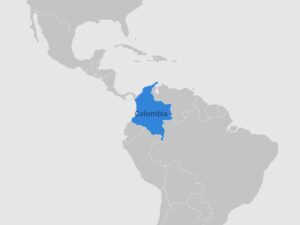
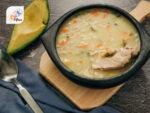

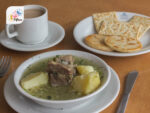
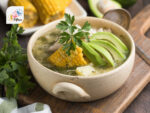
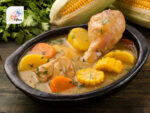
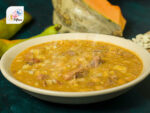
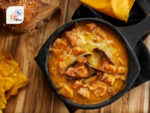
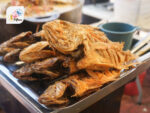




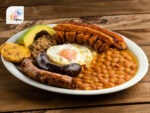
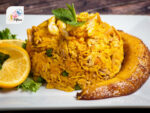



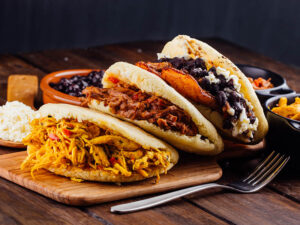
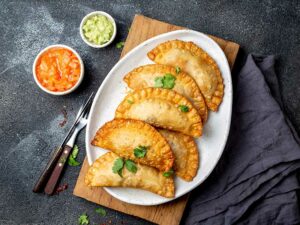
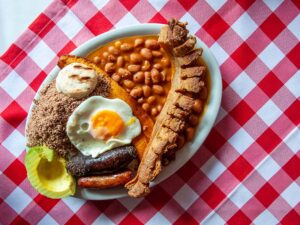
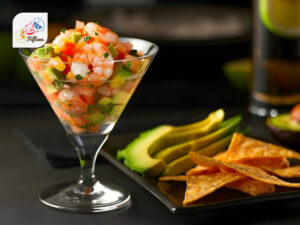
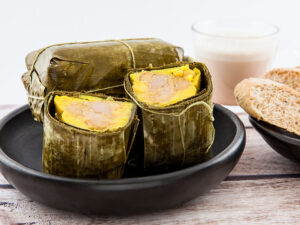
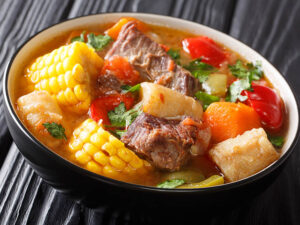
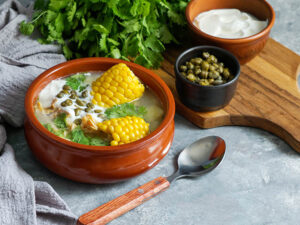
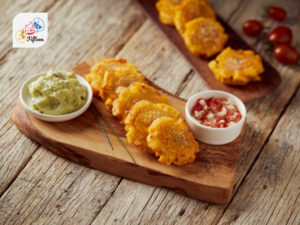
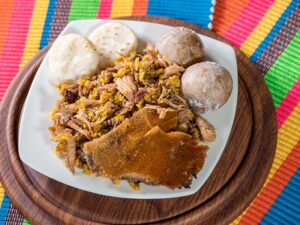
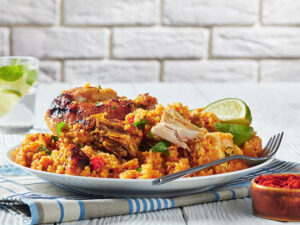
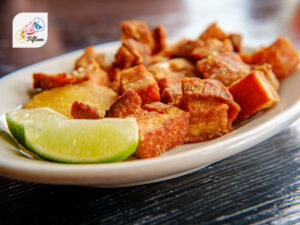
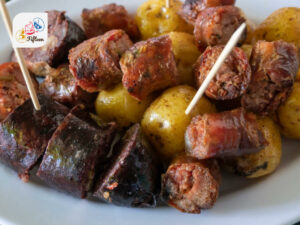
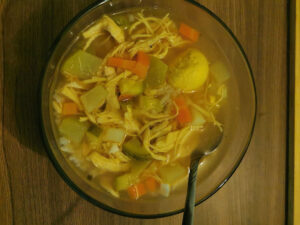
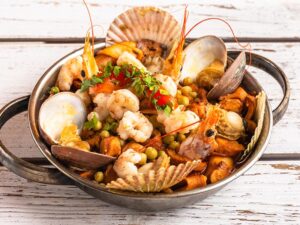
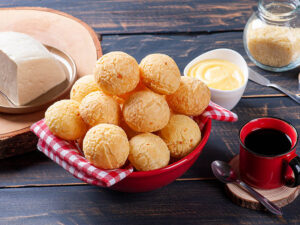
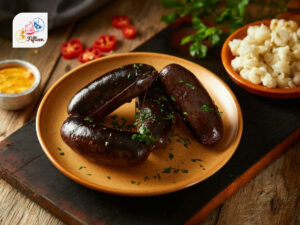
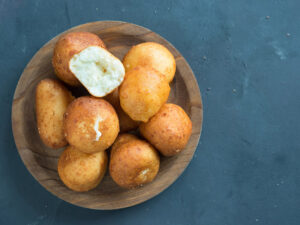
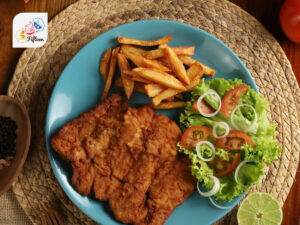

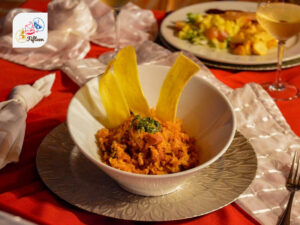
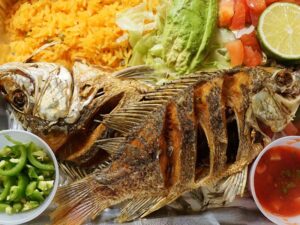
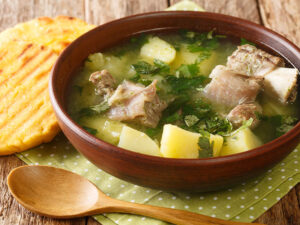
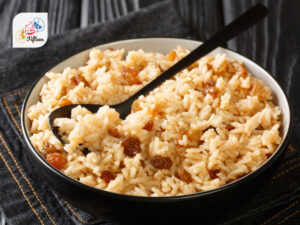
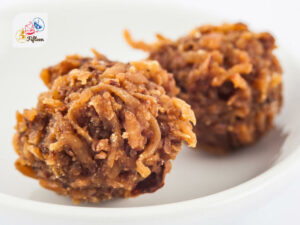
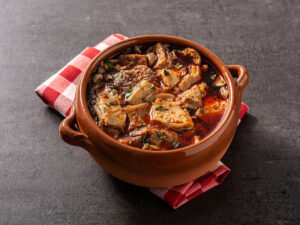

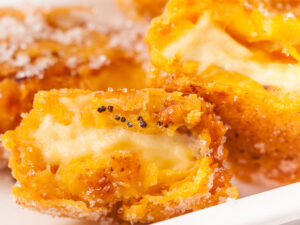
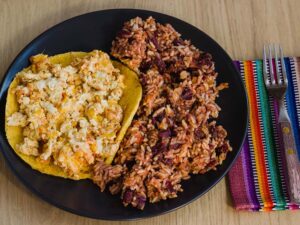
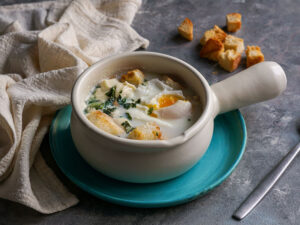
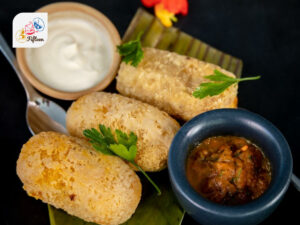
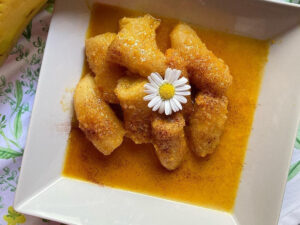
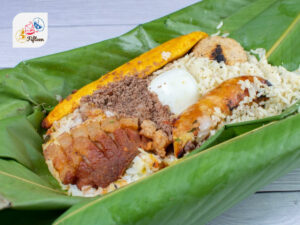
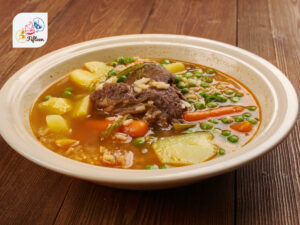
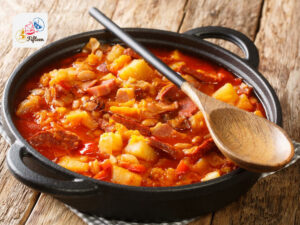
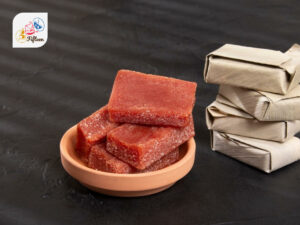

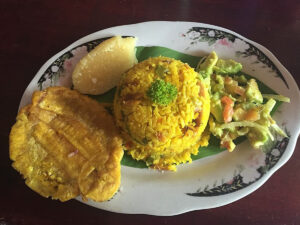
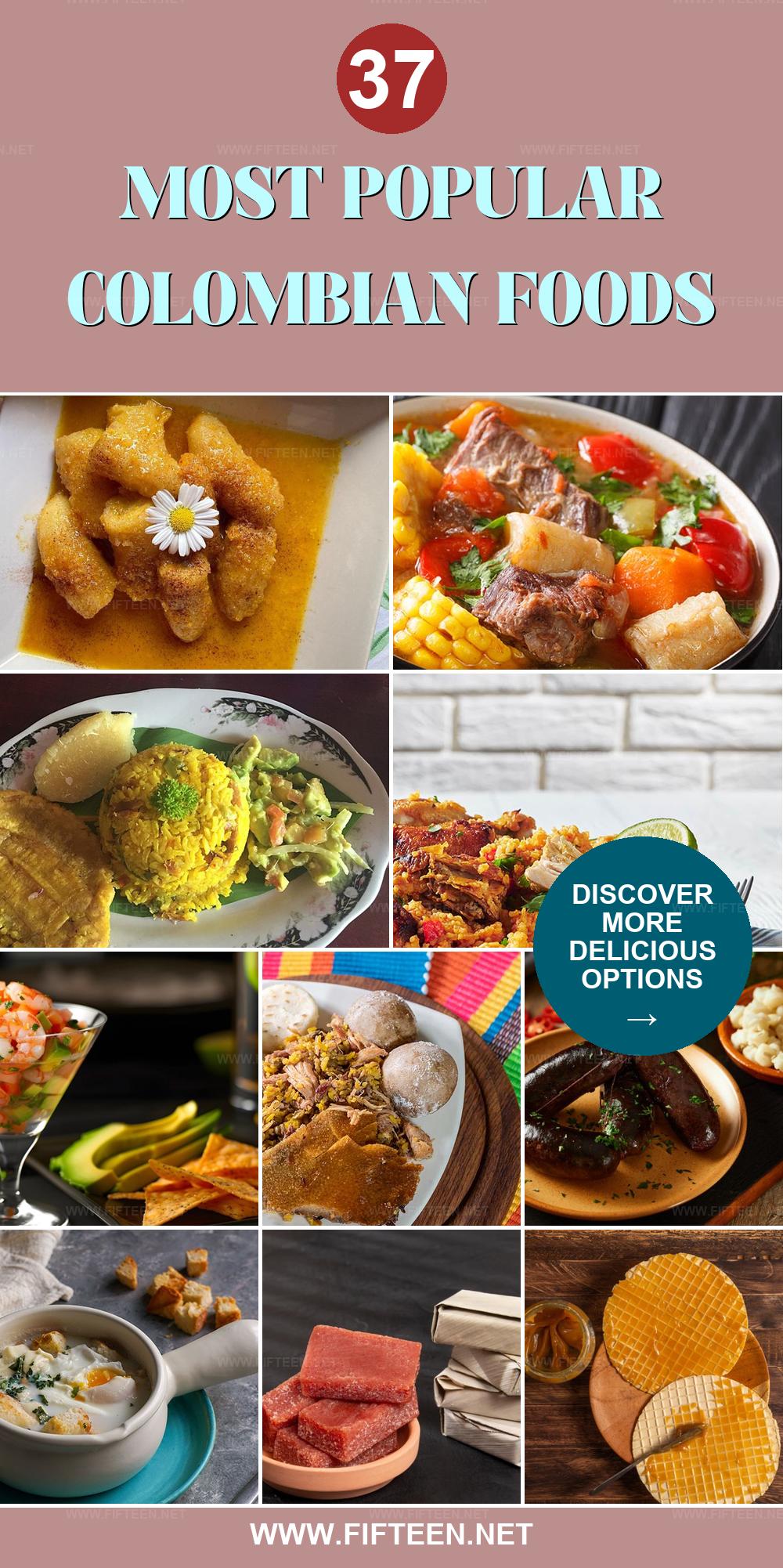
Jamie Scott
Editor in Chief, Senior Content Writer
Expertise
Home Cooking, Meal Planning, Recipe Development, Baking and Pastry, Food Editor, Cooking-video Maker, Western Food Evaluation Expert
Education
Le Cordon Bleu College of Culinary Arts
Local Community College, New York, NY
Jamie Scott is a skilled culinary expert and content creator specializing in Western cuisine. With over 15 years in the culinary field and formal training from Le Cordon Bleu, Paris, Jamie deeply understands how to blend nutrition with delicious flavors. His passion for cooking matches his commitment to making healthy eating accessible and enjoyable.
On Fifteen.net, Jamie brings a fresh perspective to classic dishes and beverages, offering readers insightful recipes, cooking tips, and a fresh view on meal planning that emphasizes taste, health, and simplicity.